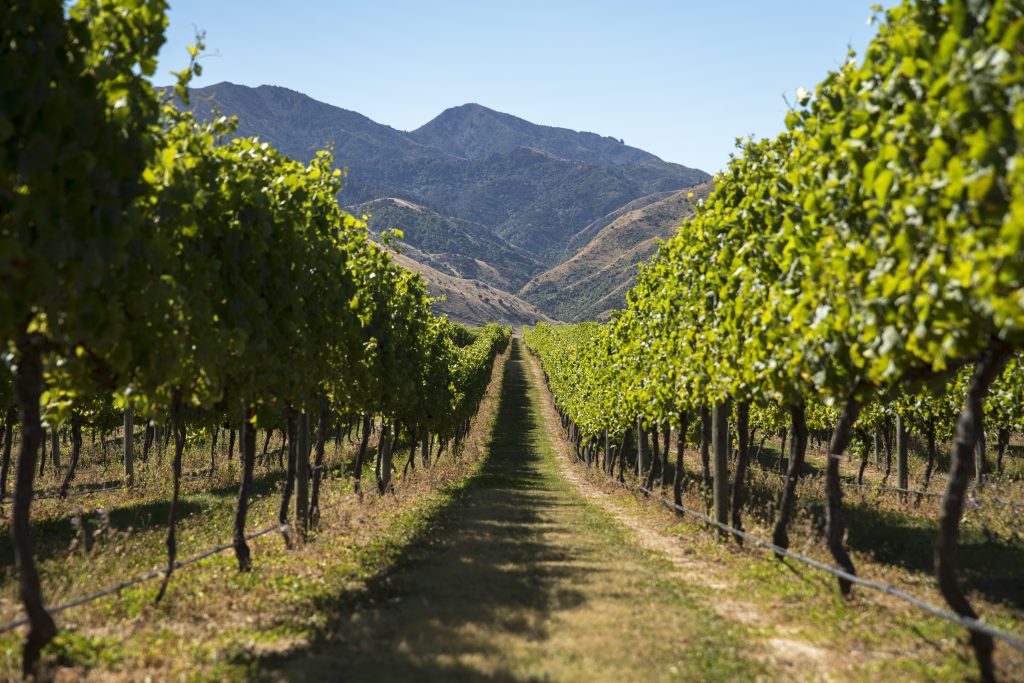Producer spotlight: Villa Maria
We explore the story behind favourite New Zealand producer Villa Maria, and how it grew from just two hectares of vines to having extensive plantings in four locations spanning the country.

The first wine made under the name Villa Maria was in 1962, when the brand’s foremost owner – George Fistonich – leased just two hectares of land from his father in Auckland. Of these two hectares, only one was planted with vines.
Fast forward to 2022 and Villa Maria is a 2.5 million-case business, which grows 28 different grape varieties across four separate sites – in Auckland, Marlborough, Hawke’s Bay and Gisborne. Its bottles are exported to 60 countries worldwide and George, who took those first tentative steps into winemaking in the ’60s, is now the recipient of a knighthood for services to the wine industry, having received the honour in 2009.
Following a period of rapid expansion in the 1970s, Villa Maria began sending its wine overseas to international markets in 1988. Today, it is one of the most recognisable New Zealand brands on shelves worldwide.
A crucial moment in the brand’s enduring success was undoubtedly the unveiling of its Marlborough winery in 2000, a move which would mark the next 20 years or so of producing quality Sauvignon Blanc, just in time for the explosion in demand for the country’s best-selling variety.
18 years later (2018) the producer threw open the doors to a third site in Hawke’s Bay, known for its incredible potential for crafting premium Pinot Noir. A fourth site followed in Gisborne, located in New Zealand’s north-east corner, dubbed the unofficial ‘Chardonnay capital’ of the country, opening up further opportunities to expand the brand’s portfolio in exciting ways.
More recently, Villa Maria was acquired in its entirety by contract winemaker Indevin in September 2021, following “an extensive nine month sale process”, according to a statement made to the drinks business.
Although the sale price was not revealed, Villa Maria Estate had previously been valued at around US $200 million.
The company restructure was not the only new thing to emerge from last year. Villa Maria also launched its EarthGarden range; a collection of 100% certified Organic, sustainable and vegan wines.
“EarthGarden joins our premium wines portfolio alongside our Villa Maria Cellar Selection, Reserves, Single Vineyards and Icons ranges,” explained Matt Deller, chief global sales and marketing officer for Villa Maria. “Our premium wines are growing at an incredible rate, which is great to see as they really showcase what Villa Maria and New Zealand is capable of. We are seeing amazing growth in the USA and Asia in particular.”
New projects on the horizon
As for what the future holds for Villa Maria, there are rumblings that the brand could be about to make noise in the sparkling category.
“New Zealand is a cool-climate country with a long and illustrious, yet under-the-radar, history as a sparkling wine producer,” Deller told the drinks business. “With a global sparkling wine shortage, in the face of growing demand and New Zealand wine more adored than ever, the timing seems right. It’s been taunting us for ages as an exciting possibility, but this might be our chance to put New Zealand sparkling in front of people.”
Villa Maria is also gearing up to release three dramatically different new Sauvignon Blancs this year, which together represent New Zealand’s main sub-regions for the grape. “People tend to think of all Sauvignon Blanc from New Zealand as being from Marlborough,” says Deller, “but that is far from the case.”
Among these is a Southern Clays Sauvignon Blanc, from the Wairau Valley, which Deller says, “rounds out a collection of terroir-driven expressions” of the grape.
Five Gold and Master medal-winning Villa Maria wines
Tasting notes provided by Patrick Schmitt MW, following The Drinks Business Spring Tasting, which took place in February 2022.

1.Villa Maria, Single Vineyard Keltern Chardonnay, 2013 – Master
A very open wine with layers of inviting aromatics. Smoky with some so-called ‘sexy sulphides’, accompanied by toast, lemon and grapefruit zest. This Chardonnay has a lovely palate, with peach, pear, baked apple, lemon zest, creamy vanilla and a long refreshing finish with touch of burnt toast and grapefruit, even a hint of struck match. A pristine white; textured, persistent and layered, with some development too.

2.Villa Maria, EarthGarden Merlot Cabernet Sauvignon, 2020 – Gold
Youthful aromatics burst from the glass, including vanilla and chocolate along with dark berry fruit, and some peppery herbal notes, and a tiny hint of Cabernet Franc-like leafiness. Its palate is intensely rich, packed with pepper and chocolate, dark berry fruit, cherry and blackberry, with some warmth. A great intense wine with grippy tannins giving a touch of dryness.

3.Villa Maria, Ngakirikiri, 2013 – Gold
This big, juicy, deeply-coloured wine has aromas of dark plums and cherry, with a touch of vanilla. On the palate there are strawberries, plums, black cherries, ripe raspberries, pepper and cedar, with masses of tannin, and then a long plummy finish. A very youthful, concentrated wine, but still drinkable now – just. Impressive.

4.Villa Maria, Single Vineyard Seddon Pinot Gris, 2020 – Gold
Pale yellow-gold and bursting with scents of yellow plums and white peach, this creamy, well-defined wine has good length and plenty to explore. Very juicy, with lots of tropical flavours including pineapple and mango, there is some balancing bright acidity, and a touch of ginger-like spice with some warming alcohol on the finish.

5.Villa Maria, Reserve Clifford Bay Sauvignon Blanc, 2021 – Gold
Pale greenish lemon in appearance, with a clean fresh nose, lots of grassy, cucumber notes, this is a lively, intense wine with a high acidity, a mid to light-body and masses of youthful, refreshing green fruit flavours.
Related news
Vinexpo America readies to head to Miami
ProWine Hong Kong will be a 'catalyst for recovery' in 2025
The 'family spirit' behind Champagne Gardet's 130th anniversary
